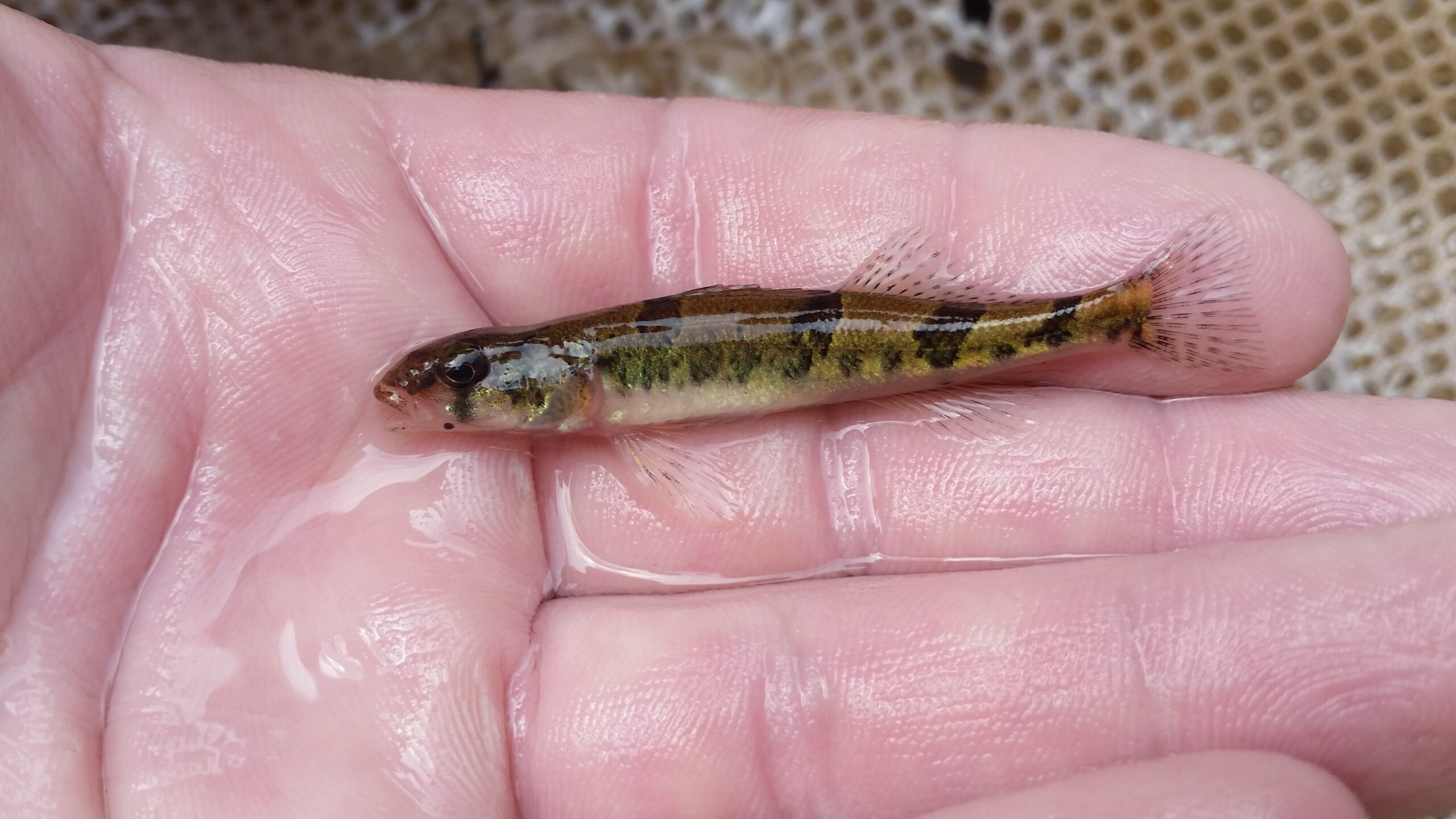A Controversial Fish Is Proposed To Come Off The Endangered Species List

The snail darter is a 3-inch fish that’s been federally protected since the 1970’s, and its protection sparked a controversy around the then-recently passed Endangered Species Act.
Courtesy of Tennessee Valley Authority
Wildlife officials say a threatened fish with a dramatic history is doing well enough that it no longer needs federal protection.
In the 1970s, the snail darter became a political lightning rod as the fight over its protection became one of the first big challenges to the then-recently passed Endangered Species Act.
Now, the three-inch fish has rebounded enough that the same people who worked to protect it more than 40 years ago are saying it’s ready to come off the endangered species list.
Biologist Jim Williams was working at the U.S. Fish and Wildlife Service in the early-70s when he first learned of the snail darter.
“I knew immediately it was a problem,” he said.
That’s because scientists found that there was only a single population of the fish left, and that population was in a part of the Little Tennessee River that the Tennessee Valley Authority was planning on flooding with a dam.
As Williams collected information about the snail darter and prepared the paperwork to protect it, lawyers with his agency were worried Congress might respond by changing the new Endangered Species Act, to dilute some of its power.
“I had a lot of people in the Interior Department looking over my shoulder,” he said.
There was already opposition to the dam, Boston College environmental law professor Zyg Plater said. Farmers in the valley didn’t want to give up their family farms, it was a popular stretch of river for trout fishing, and there were places important to the Cherokee.
But the legal challenge involving the fish was the one that had legs. Plater and his law school class took the case to the U.S. Supreme Court, which sided with them, against TVA.
That wasn’t enough, though. Outside of the courtroom, discussion of the fight was reduced to fish versus dam, or fish versus jobs. Plater said the fact that the dam was one of dozens TVA was building, that it wouldn’t generate much electricity and was largely being built for a property development scheme was missed.
So was an alternate plan to save the valley, and to create another entrance to Great Smoky Mountains National Park.
“America didn’t know that,” he said. “And so the politics just rolled it.”
Despite the Supreme Court decision, Congress allowed the dam to go forward. President Jimmy Carter signed the legislation.

Biologists swooped in and collected snail darters to introduce them to other parts of the river system before the dam wiped them all out.
“It absolutely was a salvage effort,” said Warren Stiles, the Listing and Recovery Biologist at Fish and Wildlife’s Tennessee ecological services field office.
That last-ditch effort, changes to dam operations by the Tennessee Valley Authority and cleaner water eventually worked, though. Stiles said he began realizing about a decade ago that snail darters were bouncing back.
“Stream survey crews started picking them up, especially in North Alabama, in some of the tributaries to the Tennessee River, realizing that they’re in more places than we knew,” he said.
According to the Fish and Wildlife Service, snail darters are now found in Alabama, Georgia, Mississippi, and Tennessee.
In 2019, Plater and Williams joined the Center for Biological Diversity, a group better known for its lawsuits to get species onto the endangered species list, in a petition to remove the snail darter.
“There’s hundreds more freshwater species in the Southeastern United States that are on the very brink of extinction,” said Tierra Curry, senior scientist at the Center for Biological Diversity. “We do want to see those species protected under the Endangered Species Act. And that’s what we’re usually pestering Fish and Wildlife Service to do.”
In the case of the snail darter, though, the Center for Biological Diversity agrees with the Fish and Wildlife Service.
“It just shows that it takes time, but the Endangered Species Act works,” said Kristi Young with the agency.
Williams said he spent 13 years of his career adding fish to the endangered species list. He hadn’t thought he would see the snail darter recover in his lifetime.
“There are a lot of people who don’t believe in the Endangered Species Act,” he said, “That say, ‘You know, this is like Hotel California, you can check in, but you can never leave.’ And it’s like, ‘No, you can leave. You just got to get recovered before you leave. And the Endangered Species Act is a vehicle to do that.”
The proposal to delist the snail darter will be published in the Federal Register on Wednesday and then the public can submit comments for the following 60 days.








